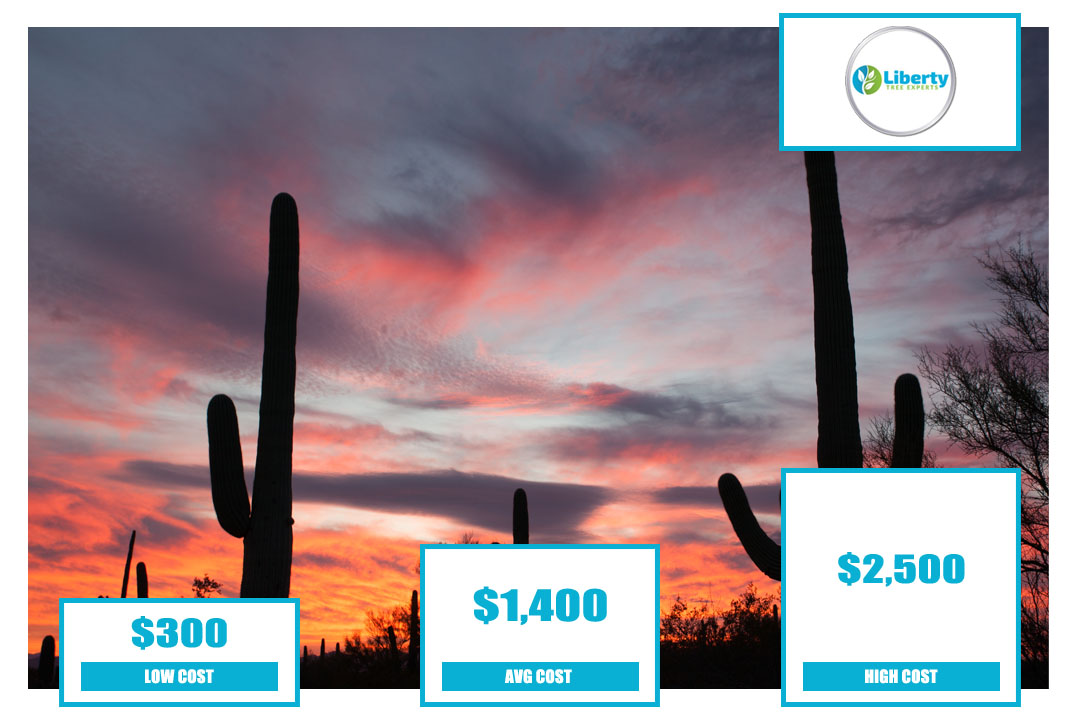Do you have trees on your property that need to be removed by a professional service, but don't want to pay a fortune? Well, the average cost for a tree removal is
$825 in 2020. The average range, depending on size of the tree goes from
$150-$1,500. Continue on for more information about the cost of tree removals and other services available in your area.
Types Of Tree Removals
Large tree removals, of course, will come with the biggest price tag. These removals will generally cost about
$1,500, but can climb to
$2,000 total. Some homeowners may not like this price tag at all. Trying to removed the tree yourself, though, is not advised. This is a task best left up to the professionals, as costly as it may seem. The removal costs so much simply due to the extensive manual labor. A medium-sized tree is priced around
$630. To qualify as a medium-sized tree, it must be between 25-75 feet tall. The lowest possible cost for a medium tree removal is
$210. Smaller trees (less than 25-feet tall) will cost around
$330 to remove.
Stump And Branch Removals
Branch and
stump removals generally cost around the same price. With costs ranging from
$60-$350, removing a stump or branch from your property is very affordable in 2020. Again, a large portion of the cost covers labor. Now, in some cases when a branch is covering or interfering with a power line, your local utility company should take care of the issue for no charge. For any other removals, it's best to call a professional tree removal service. Many companies will charge by the hour instead of a flat rate, which can often result in the homeowner spending less than anticipated.
A simple stump grinding service can cost anywhere from $75-$100, according to
Treeremoval.com. Costs for removing the stumps altogether vary based on several different factors. The size of the stump is one factor and its location on your property can cause prices to either increase or decrease. Contact your
local tree service for estimates today.
Palm Tree Removals
Common in Arizona, palm trees give your property a beautiful and distinct look. But, what happens when you need a palm tree removed? The good thing is most companies in Arizona are equipped to
remove palm trees. Palm tree removals cost between
$200-$500, with
$350 being the average price for this service. In addition to palm trees, most services will remove oak, pine or even any sort of cactus that currently occupies space on your property. Costs will vary depending on size, as is the case with any other type of tree, stump or branch.
Average Tree Removal Costs
The average cost of tree removal is about
$825 in the US, according to multiple sources.
- Tree removal: $150 -$1500
- Stump removal: $60-$350
- Stump grinding: $75-$1000
- Large tree removal: $1500+
- Fallen tree: $75-$150
- Oak tree: $200-$1000
- Pine tree: $200-$1500
- Tree branch: $200-$300
Liberty Tree Care Offers Tree Services in Scottsdale, Mesa & Tempe
If you are searching for
tree service in
Scottsdale,
Mesa or
Tempe, Liberty Tree Experts can help! Get a free
tree service quote by giving Liberty a call today at
480-482-9374.


